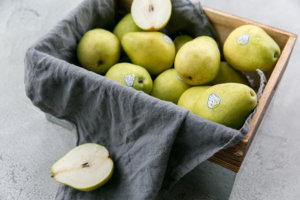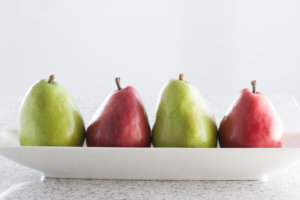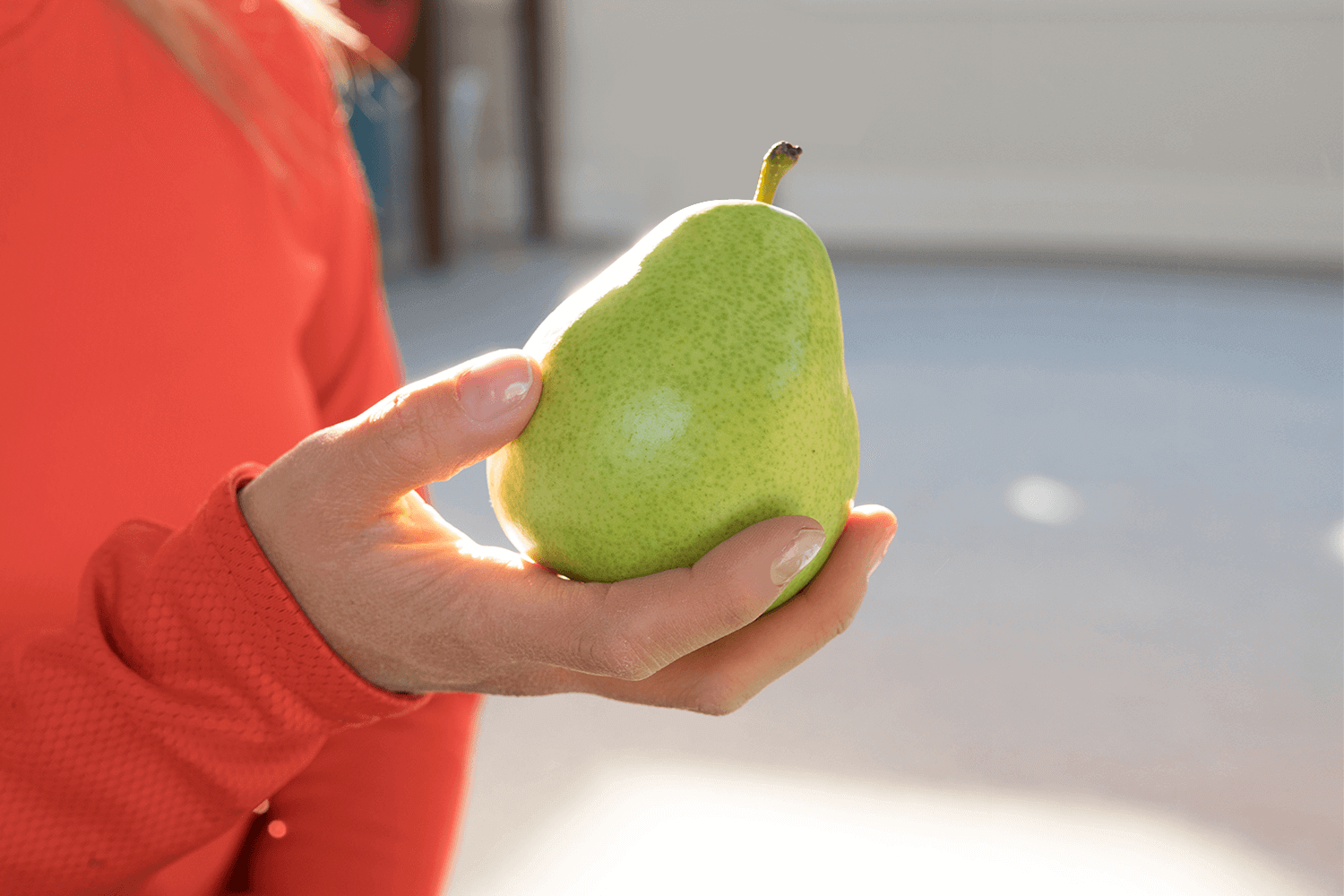How to Ripen Pears
|
Originally published in November 2013; updated September 2022.
Pears are my latest fruit addiction. I love this fruit for its unique, grainy texture and sweet, juicy flavor. In fact, combining a ripe pear with gourmet cheese and crackers has turned into an easy and tasty appetizer (and admittedly, sometimes a dinner) at my house. In this post, I’ll answer the common pear ripening question by showing you how to ripen pears quickly with two methods you can try out at home. I’ll also share a simple strategy for determining when a pear is ripe and ready to eat.

Farm Fresh Pears
Growers harvest pears once they are mature, but in the pear world, maturity means the fruit is not fully ripened. If growers allowed pears to ripen on the tree, the core of the fruit would breakdown. This causes an unappetizing mushy or mealy texture when they arrive at grocery stores (and no one wants that!). Harvesting pears at the right pressures leads to fruit that will ripen to good quality. At Stemilt, we do just that and cool them immediately after harvest in order to deliver premium pears to your stores.
The most common question we get is “how do you ripen pears?” or “how do you know when a pear is ripe?” Indeed, ripening a pear can be tricky due to the fact that most pears do not change color as they ripen, and pears are typically close to – but not quite ripe – when you purchase them at the store.
How To Ripen Pears: In a Brown Paper Bag
If the pears you brought home from the store are still a little hard and not quite ripe, you can try softening them in a bag at room temperature. Cold temperatures slow down the ripening process, so storing ripe pears in the refrigerator is the best way to maintain quality.
Like bananas and avocados, pears naturally release ethylene gas (a ripening hormone) as they ripen. Placing the pears in a brown paper bag keeps ethylene close to the fruit and speeds up ripening. Any bag would work, but paper is preferred over plastic as it allows the fruit to breathe.
 How To Ripen A Pear With Other Ethylene-Producing Fruits
How To Ripen A Pear With Other Ethylene-Producing Fruits
Another way to ripen pears is to place them next to fruits like bananas, avocados, or apples (perhaps in a fruit bowl). These fruits also give off ethylene gas, and the extra exposure to ethylene induces ripening in pears.
To really speed up the pear ripening process, combine two ethylene producing fruits (such as bananas + pears) in a paper bag and leave the bag at room temperature. Don’t forget to check the pears often for ripeness if you use this
method.
How To Know When A Pear Is Ripe?
Regardless of your preferred method, you’ll need to know how to tell if a pear is ready to eat. Some pears, like the Bartlett variety, change color as they ripen (Bartlett goes from green to yellow), but many other pears, including d’Anjou, do not.
To determine ripeness, hold the pear in the palm of your hand. Then, gently apply pressure into the neck of the pear with your thumb. Once the skin of the pear gives to that pressure (even slightly), it is ripe and ready to eat.

There is definitely a fine line when it comes to pear ripening (they can quickly go from underripe to overripe), and so it’s important to check the neck for ripeness daily, especially when you are following a method that speeds up ripening. Most pears should be ready to eat within a few days after purchase. Be sure to place ripe pears that you are not using in the refrigerator to maximize freshness.
Share with us! What is your preferred method for ripening pears? Is it different from the two methods described above?

